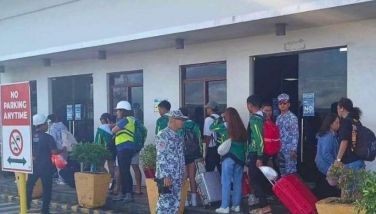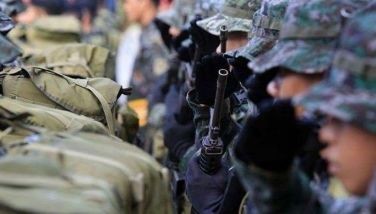Marcos Jr. seeks more investments in disaster risk reduction

MANILA, Philippines — President Marcos yesterday called on countries in the Asia-Pacific region to increase investments and funding in disaster risk reduction measures in the face of more destructive disasters brought by climate change.
In his speech during the opening ceremony of the 2024 Asia-Pacific Ministerial Conference on Disaster Risk Reduction (APMCDRR) in Pasay City, Marcos emphasized that facing calamities and disasters is a common struggle across the region.
“Across the Asia-Pacific region, nations like ours grapple with similar trials. We share a common struggle: navigating the balance between continued economic growth and dealing with the ever-present threat of disasters,” he said.
“Resilience and sustainability must underpin the national agenda of our economy. This recognizes that all our efforts in economic
planning are fragile in the face of calamities and disasters,” he added.
The Sendai Framework for Disaster Risk Reduction 2015-2030 gave the international community profound guidance in their disaster risk reduction efforts, according to the President.
The Sendai Framework was adopted on March 18, 2015 by United Nations member-states. Its goal is to prevent new and reduce existing disaster risks.
“Our path now is to redouble and to synergize our efforts to accelerate its implementation,” Marcos said.
He added that it is also crucial to align countries’ goals under this framework with the 2030 Sustainable Development Goals, the UN Framework Convention on Climate Change and the Paris Agreement.
Highlighting the theme of this year’s conference, “Surge to 2030: Enhancing ambition in Asia-Pacific to accelerate disaster risk reduction,” the President said nations are called to lead the global effort to reduce disaster and climate risks, protect the people and build sustainable economies.
He added that the surge to 2030 involves key steps: significantly scaling up investments and develop financing mechanisms in disaster risk reduction; embracing inclusion to cover various sectors; acknowledging that climate change and disasters are catalysts for human displacement and adopting innovation at the heart of everyone’s strategy.
Other key steps include coordination and collaboration as the cornerstones of a whole-of-nation approach; engaging all stakeholders to collectively identify the needs, address the gaps and anticipate future risks; fostering open dialogue to bring sectors together; putting great value on private sector engagement to advance investments and practices in various areas and advocating for stronger international legal frameworks that guide disaster prevention and response.
The APMCDRR is a biennial conference that convenes governments, international and national institutions, civil society organizations and other relevant stakeholders to collectively address challenges and reduce disaster risks.
Marcos cited the Philippines’ hosting of the Loss and Damage Fund Board, which he said would benefit climate vulnerable countries, many of whom are in the Asia-Pacific region.
He also mentioned the country’s guidelines on the issuance of green and blue bonds.
He noted that the Philippines’ green bond market has been recognized by the Asian Development Bank for its potential to expand even further.
The ADB website states that green bonds include investments that support climate change mitigation such as renewable energy, energy efficiency and sustainable transport and climate change adaptation such as energy infrastructure resilience, water supply and infrastructure, agriculture and transport.
Blue bonds include investments that contribute to marine and coastal ecosystem management and restoration; pollution control for marine and coastal environments, including the rivers that drain to the ocean and sustainable coastal and marine development.
Marcos said the Philippines is proud to lead the initiative toward developing an international legal instrument for the Protection of Persons in the Event of Disasters.
- Latest
- Trending






























